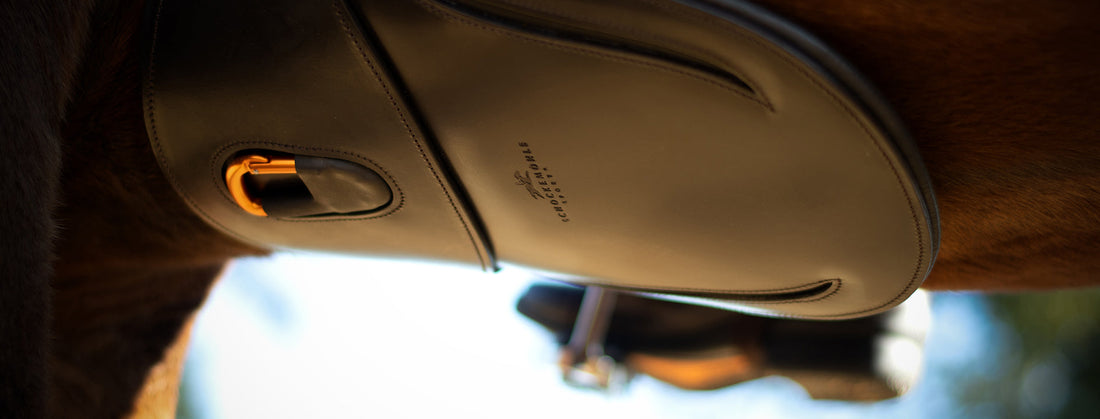
Girths
Share
One piece of tack most equestrians will be familiar with is the girth which is traditionally a straight padded piece of leather with buckles at either end to attach to the girth straps of the saddle. This secures the saddle in place by fastening it on the girth straps each side and passing under the horses belly.
Many traditional girths are very similar but differ in one or two aspects, such as the materials. For example, for hundreds of years, girths have traditionally been made of leather which is long-lasting if it is looked after correctly. More recently we are seeing synthetic leather or neoprene alternatives for those that prefer their tack to be easier to look after, or more economical.
In Show Jumping and Cross Country, horses often wear a much broader type of girth which covers a large area of the horse’s underside known as a Stud Girth. These are designed to protect the horse from injury when the horse tucks their front legs underneath them when wearing studs in their shoes.
The latest research is showing that we equestrians really ought to be considering less traditional styles of girth. Girths have often previously been thought of as a one-size-fits-all piece of tack. Some equestrians are finding that even though they have found the perfect saddle for their horse, that is correctly fitted by a saddle fitter, the fit is still not allowing the horse to have the freedom of movement that they want. The answer could lie in the style of girth.
Anatomical Girths
Traditional straight girths can fall victim to the issue of sliding forwards to the incorrect position. Anatomical girths are cleverly-designed to comfortably sit further back on the horses belly.
A key feature of this style of girth is an extra support curve directly underneath the horse that sits in-between the front legs near to the sternum (the sternum joins the left and right sides of the ribcage in the middle) without causing excess pressure on this part of the horse whilst holding the girth in the most appropriate place.
By securing the saddle with an anatomical girth in the correct place, equestrians are allowing their horse’s scapula to move free from saddle obstruction. Allowing the elbow to move easily without being blocked or rubbing on the girth as it might with a traditional style girth. All while securing the saddle appropriately in its place to avoid slippage.
With the reduction in elbow pressure, and better saddle placement the freedom of movement in the scapula that an anatomical girth will allow. A decent anatomical girth is well worth the investment.
However the greatest benefits can be seen in horses with big shoulder movements where the saddle will be secured firmly away from the scapula.
Horses with deep barrels, or broader bellies will also find anatomical girths more helpful in keeping the pressure well away from their elbow
We have some wonderful options on our website of girths and our favourites are:
1. The Cavallino AirTech Shoulder Relief Girth this is the anatomical version of the very popular Cavallino Air-Tech Straight Girth a synthetic girth with removeable backing for easy cleaning.
These are both made in NZ so we can get custom made sizes easily.
2. Nice long anatomic girth Cavallino Anatomic Leather Girth these are nice soft leather and really well priced.
3. Smart short leather girth Platinum Anatomical Shaped Short Leather Girth these are nice soft leather and really well priced.
4. Short leather Stud Girth Platinum Leather Short Stud Guard Girth these are nice soft leather and really well priced.
5. Long stud girth Platinum Expansion Stud Girth these are nice soft leather and really well priced.
Our full range of girths are available here Girths